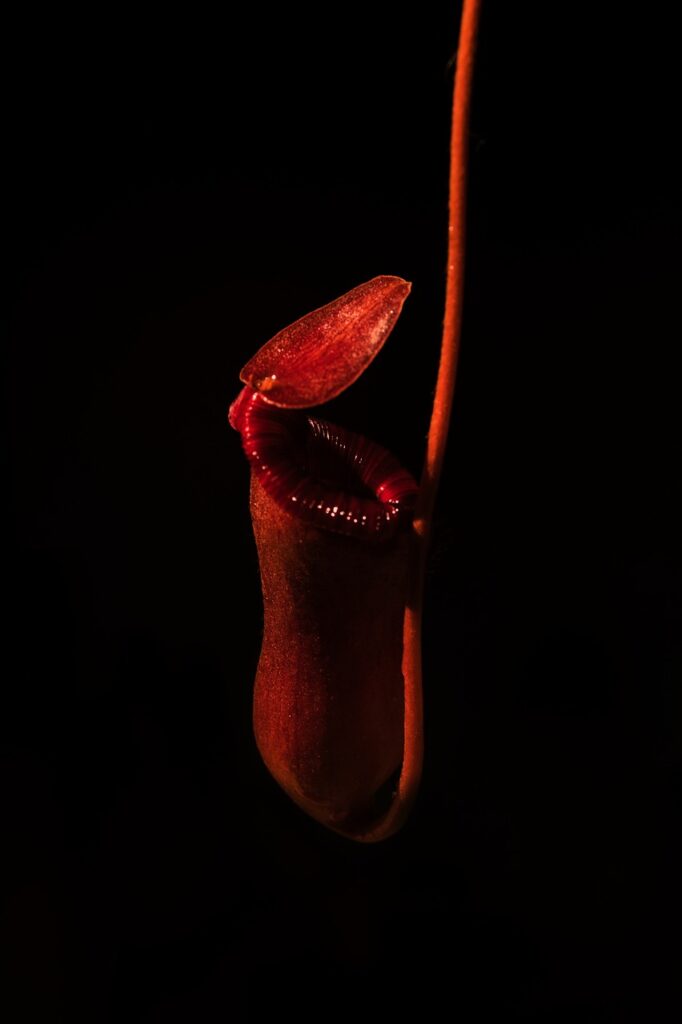If you are wondering why your pitcher plant is turning brown, there could be a few reasons why. Most likely, it is due to too much direct sunlight or not enough water. Pitcher plants are native to forested habitats and typically grow in humus-rich soils with high moisture levels.
When grown in gardens, they prefer shady areas with moist soil. If your pitcher plant is getting too much sun, you can try moving it to a shadier spot. If it’s not getting enough water, make sure to water it more frequently. If you’re still having trouble, you can contact a professional for help.
Is It Normal For Pitchers In Pitcher Plants To Turn Brown And Crispy?
Yes, it’s normal that pitcher plants turn brown or crispy. It is a part of their natural lifecycle. As plants get older, individual Pitcher flowers begin to yellow, brown, and die in their final stages. These older pitchers will then be replaced with younger ones.
Despite the carnivorous plants being alive, brown pitchers are unable to be replaced during the autumn months. In autumn, pitchers remain dormant and go into hibernation mode. New pitchers are not formed for this season. However, older or broken pitchers may be replaced relatively quickly when plant growth is healthy during the rest of the season.
What Should I do If A Pitcher Plant Doesn’t Grow New Leaves?
If your pitcher plant grows leaves but the leaves turn brown, fall off and turn to shrivel, it may be because of problems with humidity/light. Make sure there is adequate air circulation in the room and that you receive direct sunlight in the room several times per day. If that doesn’t work, you can try raising the humidity levels by using sphagnum mosses and having them placed in pots.
What Causes Pitcher On Pitcher Plant To Turn Brown And Crispy?
It is often believed that the pitcher of pitcher plants turns brown or crispy as a result of completing the life of the plants. This is not often true. Browning or drying may also occur if the plants are placed in the wrong place on the ground, or the surface, or other problems inside the pit.
Is My Pitcher Plant Dying?
These often are the first conclusions someone jumps to when it comes to the cause of plant death. Obviously, it also has other variables. Immediately contact a local nursery if you see any warning signs.
How Can I Save My Pitcher Plant Turning Brown?
If your pitcher plant is turning brown, it is likely due to a lack of water or nutrients. Pitcher plants are native to tropical regions and require high levels of moisture to stay healthy. If the plant is not receiving enough water, the leaves will begin to turn brown and wilt.
Another possible cause of brown leaves is a lack of nutrients. Pitcher plants require a high level of nutrients, especially nitrogen, to stay healthy. If the plant is not receiving enough nutrients, the leaves will begin to turn brown and die.
Adequate Sunlight
Finally, brown leaves can also be caused by too much sun exposure. Pitcher plants prefer shady areas and indirect sunlight. Direct light can scorch the leaves and cause them to turn brown.
If you see your pitcher plant turn yellow, you will need to give it proper care to save it. Water the plant regularly. keep the soil moist, and fertilize it with a high-nitrogen fertilizer. You may also need to move the plant to a shadier location to protect it from the sun. By taking these steps, you can keep your pitcher plant healthy and prevent it from turning brown.
What Is The Average Life Of Carnivorous Plants?
The average life of carnivorous plants is around 3 to 5 years. However, some species can live up to 10 years or more. The lifespan of a carnivorous plant depends on several factors, including the plant’s size, its growing conditions, and the amount of prey available.
In general, larger plants tend to have shorter lifespans than smaller plants. This is because they require more energy to sustain their larger size and because they are more likely to be preyed upon by predators. Carnivorous plants that are grown in ideal conditions and that have an abundance of prey can often live longer than those that do not.
Pitcher Plant Care: Tips For Watering
Because pitcher plants don’t get many nutrients from the soil, they need to be watered frequently. The best way to water pitcher plants is to use distilled water or rainwater. Don’t use tap water, as the chemicals in it can damage the plant. Water the plant until the water runs out of the bottom of the pot.
To ensure good drainage, let the plant drain for an hour before putting it back in its saucer. Water your plant weekly during the growing season, and monthly during the winter. With proper care, your pitcher plants thrive and provide you with years of enjoyment.
My Pitcher Plant Turned Brown, What Should I Do?
If your pitcher plant has turned brown, there are a few things you can do to try and revive it. First, check the watering schedule and make sure you are not under/overwatering the plant. Too much water can also lead to root rot, which can cause complete discoloration.
Secondly, check dry or brown pitchers for signs of pests or diseases. If you see any insects on the plant or evidence of fungus, treat the plant with an appropriate pesticide or fungicide.
Finally, make sure the plant is getting enough light. Pitcher plants need at least six hours of indirect sunlight per day in order to thrive.
If your pitcher plant is still struggling, you may need to repot it in fresh soil. Whatever the reason may be, plants encountering issues such as browning, is completely normal. With a little care and attention, your pitcher plant should soon be back to its vibrant self.








